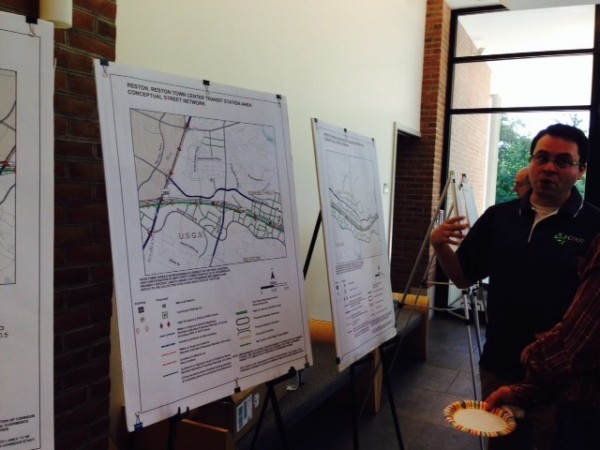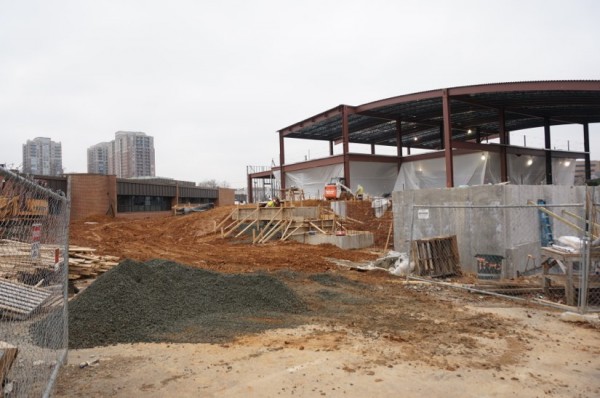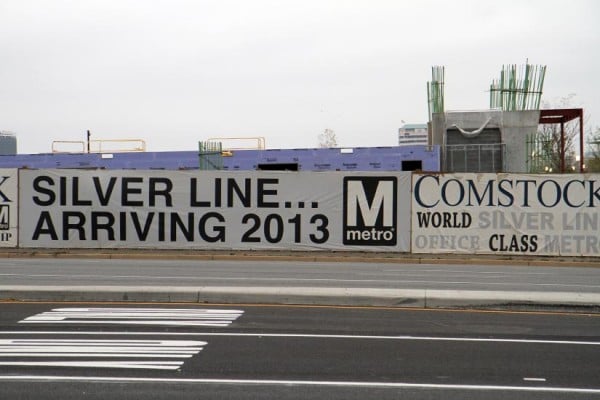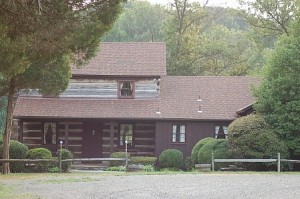 Reston’s Fairfax Hunt Club may eventually be home to a subdivision when Phase II of the Reston Master Plan Special Study is completed.
Reston’s Fairfax Hunt Club may eventually be home to a subdivision when Phase II of the Reston Master Plan Special Study is completed.
Phase II, which kicked off in May, offered an opportunity to submit property-specific land use proposals to be included in the draft “strawman” Comprehensive Plan text for Reston coming up later this year. Submissions were accepted from May 22 through July 11.
One of the proposals came from Robert Hostler, president of Fairfax Hunt Inc. He submitted a proposal to the Reston Master Plan Special Study group to rezone the hunt’s at 1321 Lake Fairfax Dr. from recreational to residential.
“The Owner, Fairfax Hunt Inc., is considering relocating its operations and desires to have the option for this property to be converted to residential as are the surrounding properties,” the online submission states.
The Fairfax Hunt has deep, if not active, roots in Reston. A. Smith Bowman — founder of the former Reston distillery bearing his name — also founded the Fairfax Hunt Club in 1928. He later gave part of his 4,000-acre property to the club, and the clubhouse, built in 1951, remains as a catering facility today. Eventually, much of the surrounding land was sold to build Reston and fox hunting moved farther into horse country.
The clubhouse contains part of a 200-year-old log house that was formerly located a few miles away in Vienna. The club’s still owns eight acres near Lake Fairfax Park to the south and housing subdivisions on the other sides.
Phase 1 of the Reston Master Plan Special Study was approved by the Fairfax County Board of Supervisors earlier this year. Those plans set development standards in the areas within one-quarter mile of Reston’s future Metrorail stations. The first Reston such station, Wiehle-Reston East, opens Saturday.
Phase II is expected to be a shorter process that will look at specific land use projects and Reston’s village center areas, which may be redeveloped in the future.
Only three specific land use suggestions were sent to Fairfax County in the open period. One was not specific and was disqualified. The other was to add new apartments and increase density at Colvin Woods, a 1970s apartment complex on Becontree Drive.
Photo courtesy of Fairfax Hunt Club
Reston residents and community leaders came to United Christian Parish on Saturday to see what Fairfax County planners may have in store for Reston as the community undertakes Phase II of the Reston Master Plan Special Study.
What they found: mostly information about the process, which will rely heavily on input from the people who live or own businesses here.
As Reston embarks on its second 50 years, there needs to be a plan in place for redevelopment, whether that happens next year or in 30 years, says Hunter Mill Supervisor Cathy Hudgins.
“Whether we develop today or in the future, we need to determine what the county’s role will be in that plan and what the plan should be,” she said. “Phase I changed the rules. Here, we are not changing the rules.”
Fairfax County officials say the the current comprehensive plan, last updated in 1989, requires revision because Reston no longer has a master developer to update the plan for Reston; the plan for Reston has outdated elements; and with population expected to grow with the arrival of Metro later this year, Reston is evolving as a community.
After four years of task force meetings, Phase I of the Reston Master Plan Special Study was approved by the Fairfax County Board of Supervisors earlier this year. Phase I maps out how development should proceed in the area surrounding Reston’s eventual three Silver Line Metro stations. Much of that area, particularly Wiehle-Reston East (scheduled to open this summer), previously had little residential development.
Phase II will mainly look at Reston’s village and convenience centers. It will also be done under Fairfax County’s new “Fairfax Forward” method of comprehensive plan review, which will rely on greater community engagement.
Reston founder Bob Simon, for one, says Reston could have fewer village centers. When Reston was planned in the early 1960s, supermarkets were about 15,000 square feet, he said. Today, they are more than 100,000 square feet.
“Since we were planning for 80,000 people, we planned for seven village centers and one town center,” said Simon. “We don’t need all of them. But I do think each village center should have a plaza.” Read More
 Restonians will get a chance to see the rough cut of Another Way of Living: The Story of Reston, VA, on Saturday.
Restonians will get a chance to see the rough cut of Another Way of Living: The Story of Reston, VA, on Saturday.
The film will be screened Saturday at United Christian Parish (11508 N. Shore Dr.) following a community open house to discuss the Reston Master Plan Special Study Phase II. The community open house will feature Hunter Mill Supervisor Cathy Hudgins and will run from 8:30 a.m. to 10:30 a.m.
The film, formerly titled The Reston Story, was screened for a select audience at Reston Community Center as part of Reston founder Robert E. Simon’s birthday 100th birthday celebrations in April.
The 70-minute film directed by Peabody Award winner Rebekah Wingert-Jabi looks at Reston’s founding in 1964 as an inclusive community “in the middle of nowhere,” to the vibrant place it is today.
Wingert-Jabi and producer Suzi Jones hope to enter the movie into film festivals.
County planners are beginning Phase II of the Reston Master Plan Special Study about two years behind schedule.
Phase I, which looked at the how development should proceed in the areas surrounding Reston’s upcoming Metro stations, was completed late last year and approved by the Fairfax County Board of Supervisors in January.
Phase II will look at what kind of changes — if any — should happen to Reston’s neighborhoods, village centers and convenience centers, as well as some areas adjacent to Reston. Lake Anne Plaza, which underwent is own rezoning and revitalization process from 2006-09, will not be part of the study.
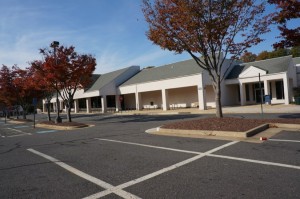 What should the Reston of the future look like?
What should the Reston of the future look like?
That’s the question as Fairfax County planners are beginning Phase II of the Reston Master Plan Special Study — about two years behind schedule.
Phase I, which looked at the how development should proceed in the areas surrounding Reston’s upcoming Metro stations, was completed late last year and approved by the Fairfax County Board of Supervisors in January.
County officials say the the current comprehensive plans, last updated in 1989, requires revision for three primary reasons: Reston no longer has a master developer to update the plan for Reston; the plan for Reston has outdated elements; and with population expected to grow with the arrival of Metro later this year, Reston is evolving as a community.
Phase II will look at what kind of changes — if any — should happen to Reston’s neighborhoods, village centers and convenience centers, as well as some areas adjacent to Reston. Lake Anne Plaza, which underwent is own rezoning and revitalization process from 2006-09, will not be part of the study.
Planners will pay particular attention to the commercial area just north of Reston Town Center and Baron Cameron Avenue.
This area contains retailers such as Home Depot, Silver Diner, Trader Joes and others. The county says this area is part of the original 1987 460-acre Reston Town Center rezoning, but developed with a different character than the surrounding residential areas and the retail area south of Baron Cameron Avenue. The comprehensive plan will provide framework on how this commercial area should develop over the mid-to-distant future.
Also up for discussion — Tall Oaks Village Center, which has been losing tenants for years and remains mostly empty.
Phase II will also:
Create a New Reston Land Use Map
The current Master Plan for Reston is comprised of three black and white maps (last approved in 1989) that depict a land use plan, community facilities plan, and a transportation plan. While the transportation plans now contain the latest transportation information, the land use and community facilities plans need to be updated. Read More
The construction crews are hard at work on Fairfax County’s new, $18 million Reston District Police Station. The building, expected to be completed later this year, towers over the outdated current building, which will be torn down after the move.
Nearby, Cameron Glen Rehabilitation Center is preparing to close the 173-bed facility later this year. Most patients will move to a new facility, Potomac Falls Health and Rehabilitation in Loudoun. Both care facilities are owned by Commonwealth Care of Roanoke, but Inova owns the land parcel on which the Cameron Glen sits.
Meanwhile, voters in 2012 approved a $25 million Fairfax County Public Library Bond , $10 million of which will be allocated to building a new Reston Regional Library.
All of this could add up to an area near Reston Town Center that looks even more urban than the Reston Town Center itself.
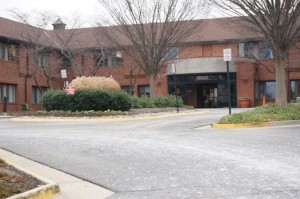 Even with these developments already underway, the longterm plan for what developers call the Town Center North area is still a work in progress. The 47-acre area is bounded by Baron Cameron Avenue, Fountain Drive, and Town Center Parkway and Reston Parkway. The land is owned by two parties: Fairfax County and Inova.
Even with these developments already underway, the longterm plan for what developers call the Town Center North area is still a work in progress. The 47-acre area is bounded by Baron Cameron Avenue, Fountain Drive, and Town Center Parkway and Reston Parkway. The land is owned by two parties: Fairfax County and Inova.
The area currently sees a variety of uses — from Embry Rucker Community Shelter (and a few people living in the woods across the street) to open space to the soon-to-be empty nursing home — planners will take the next steps to determine what the best use is as Reston moves forward as a dense, transit-oriented community.
But at more than one-quarter mile from the future Reston Parkway Metrorail Station, how urban should it be?
“Town Center North is an appealing area for redevelopment, since it’s a fairly large area with two major landholders, Inova and and the County, which makes the process easier,” said Reston Citizens Association president Colin Mills. “Supervisor [Cathy] Hudgins supports expanding Reston’s urban core, and Town Center North is a prime location for that.” Read More
 The Fairfax County Planning Commission has deferred making a decision on the amendments to the county master plan that will affect development around Reston’s transit stations.
The Fairfax County Planning Commission has deferred making a decision on the amendments to the county master plan that will affect development around Reston’s transit stations.
After a public hearing last month, the planning commission was scheduled to decide on Thursday whether to recommend the changes to the Fairfax County Board of Supervisors. However, the commission says it needs more time to consider the changes and public comments and postponed its decision until Jan. 9.
After four years of work, the Reston Master Plan Special Study Task Force recently completed the comprehensive plan amendment — a massive document outlining everything from density around three Metro Silver Line station’s to street patterns to recreational facilities. Dozens of citizens spoke at the public hearing with a variety of opinions on the plans.
One of the main points of the plan: where to put the people. The plan calls for ratios of 50 percent commercial/residential within one-quarter mile of the Metro stations at Wiehle-Reston East, Reston Parkway and Herndon-Monroe. In the half-mile range, the ratio should be 75 percent residential, 25 commercial.
The concept of implementation — just how the plan will be executed, who will pay and other details — came up often in citizen testimony at the public hearing.
“Planning without implementation is empty,” said Reston Citizens Association President Colin Mills. “It is not just a planning issue, it is a political issue. We support having a single entity responsible for implementation issues.”
Planning commission member James Hart reminded Mills, and the people assembled Nov. 13, that implementation specifics don’t need to be in place as the new Reston will evolve over 30 years and planning will get more specific when variables such as developer proffers, population growth and economic climate are known.
“The comprehensive plan regulates nothing, ” he said. “In Virginia, we are under the Dillon Rule. It is probably inappropriate to put things in the plan like specifics if they have no force of law. The plan is intended to be a general guide. If we bear that in mind a lot of what is in this plan looks a lot better.”
Read more from the public hearing here.
More:
Comprehensive Plan Goes to Planning Commission, With Caveats and Complaints
The Fairfax County Planning Commission will decide Thursday whether to recommend the proposed changes to the Reston Master Plan to the Fairfax County Board of Supervisors.
The Planning Commission heard from many residents, developers and members of the Reston Master Plan Special Study Task Force and other interested parties in a lengthy public hearing two weeks ago.
After four years of work, the Reston Master Plan Special Study Task Force recently completed the comprehensive plan amendment — a massive document outlining everything from density around three Metro Silver Line station’s to street patterns to recreational facilities — and there was no shortage of opinions,
The Planning Commission will either make recommendation to move it on to the county Board of Supervisors or tell the task force to make more changes. Task Force Chair Patty Nicoson says the group will also create its own staff report.
One of the main points of the plan: where to put the people. The plan calls for ratios of 50 percent commercial/residential within one-quarter mile of the Metro stations at Wiehle-Reston East, Reston Parkway and Herndon-Monroe. In the half-mile range, the ratio should be 75 percent residential, 25 commercial.
“We focused on total amounts of residential/commercial that can be within a district,” Nicoson told the planning commission at the public hearing. “We want to see new recreation center, a performing arts center. We are committed to the environment. We want to see the principles of Reston maintained as we look to the future. This will help us build on Reston as a planned community that was built with nature in mind. Read More
The Fairfax County Planning Commission did not vote on the future of Reston development on Wednesday, but heard from many residents and other interested parties who are concerned about what that future will look like.
After four years of work, the Reston Master Plan Special Study Task Force’s comprehensive plan amendment — a massive document outlining everything from density around three Metro Silver Line station’s to street patterns to recreational facilities — has been presented to the planning commission, which will now further review it before making a recommendation to move it on to the county Board of Supervisors or tell the task force to make changes. Task Force Chair Patty Nicoson says the group will also create its own staff report.
The planning commission says it will vote on the plan on Dec. 5.
One of the main points of the plan: where to put the people. The plan calls for ratios of 50 percent commercial/residential within one-quarter mile of the Metro stations at Wiehle-Reston East, Reston Parkway and Herndon-Monroe. In the half-mile range, the ratio should be 75 percent residential, 25 commercial.
“We focused on total amounts of residential/commercial that can be within a district,” Nicoson told the planning commission. “We want to see new recreation center, a performing arts center. We are committed to the environment. We want to see the principles of Reston maintained as we look to the future. This will help us build on Reston as a planned community that was built with nature in mind.
“Some are concerned we have not focused on implementation,” she added. “First have to concentrate on the vision, then implementation. Read More
 Colin Mills is the president of the Reston Citizens Association. He will write a weekly opinion column on Reston Now.
Colin Mills is the president of the Reston Citizens Association. He will write a weekly opinion column on Reston Now.
Last night, four years of work on the Reston Master Plan Task Force came to a frustrating and disappointing conclusion. The Task Force voted to send the new Comprehensive Plan to the Planning Commission, starting it down the road to approval before the Board of Supervisors. RCA’s representative, Terry Maynard, voted “no” on the final product. I did not have a vote on the Task Force, but if I had, I would have voted the same way.
RCA was not satisfied with the latest draft of the Comp Plan, as evidenced by the report card that our Reston 20/20 Committee prepared this week, which gave it an overall grade of D. We felt that the plan was seriously lacking in many areas, most notably parks and recreation, transportation, and implementation. We joined with ARCH and RA to produce a joint comment describing the areas that we felt needed improvement.
Unfortunately, the few changes approved by the Task Force last night did little to improve the plan. Therefore, we felt that we had no choice but to oppose it.
The lack of changes to the draft plan was not for a lack of suggestions. By my count, there were 15 sets of comments submitted suggesting changes to the plan, including ours. Unfortunately, the discussion last night was limited to a handful of subjects selected by the Task Force chair, Patty Nicoson. The Task Force did not even consider all of the comments made by its members. Major topics such as transportation and implementation weren’t even discussed at all! Since those were two of the areas that needed the most work, I was extremely disappointed that they weren’t even raised. Read More
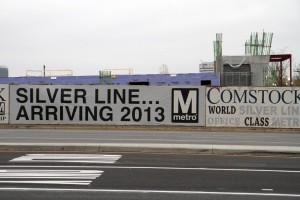 The Reston Master Plan Task Force is about to publish what could be its final draft for the future of development around Reston’s Metro stations, and the Reston 2020 Committee is giving those plans a ‘D’ grade.
The Reston Master Plan Task Force is about to publish what could be its final draft for the future of development around Reston’s Metro stations, and the Reston 2020 Committee is giving those plans a ‘D’ grade.
Reston 2020, the community planning entity of the Reston Citizens Association, presented the findings to RCA at its regular meeting on Monday.
Reston 2020 co-chair Terry Maynard says the group examined each section of the draft Plan in terms of its impact on Reston’s quality of life and the community’s vision and values.
“The overall grade was based on the compilation of grades for each of the draft Plan’s sections,” Reston2020 said in a press release. “The highest grade given, a “B”, was awarded to the Overview, which covers Reston’s Vision and Planning Principles, and to the Environmental Stewardship section. Grades of “F” — which meant the section met virtually none of Reston’s expectations—were earned by the Urban Parks, Recreation, and Cultural Facilities section and the Implementation section.
“We’ve worked as hard on this as anyone over the last 4 years,” said RCA President Colin Mills. “I’d hoped that by now, we’d have something we could all be proud of. But we’ve got to call it like we see it, and there are major issues that haven’t been addressed yet. We need a plan that meets our community’s expectations for the future.”
Said Maynard: “Restonians deserve a draft Plan that is much more responsive to their needs now and in the future. This draft Plan generally focuses on the needs of developers and the County although we appreciate its relative strength in environmental stewardship, an important concern to Restonians.”
The RCA Board voted unanimously to direct Maynard, RCA’s representative to the Special Study Task Force, to vote “No” on the draft plan in its current form if a vote is taken as planned at the task force’s meeting Tuesday.


